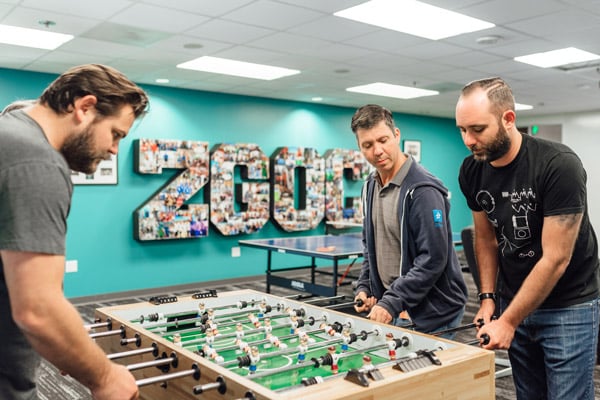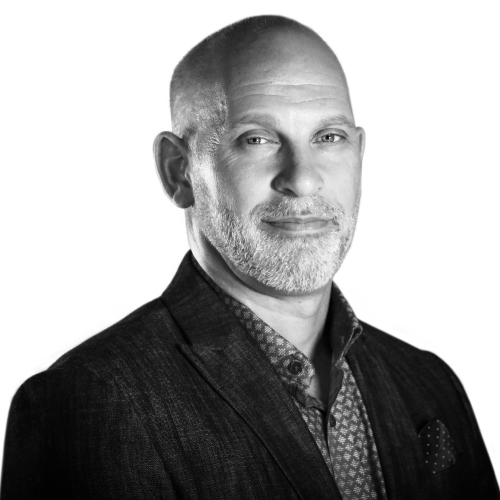Some would say that Dr. Sebastian Hubert is a born traveler. Raised in Munich, Germany, international work and understanding different cultures and relevant local perspectives are a cornerstone of his personal and professional life. He’s lived in Barcelona, Spain, and worked across the globe, including in the US, India, Russia, the Middle East, and China. It’s one of the reasons why Hubert has so much in common with his current company, Siemens, a global powerhouse in electrical engineering and electronics working to develop and manufacture products, design and install complex systems and projects, and tailor a wide range of services for individual requirements.
Siemens may be headquartered in Germany, but its offices span the globe. Today, in fact, Hubert can be found in Singapore, known for its booming economy and for being a digitalization hub. This is where he’s lived and worked for the past three and a half years as the global head of strategy and technology and as a member of the executive leadership team of talent acquisition. As Hubert explains, Siemens has a renowned international presence, especially when it comes to talent acquisition. Every year, the global talent acquisition team recruits more than 35,000 hires from more than one hundred countries, ensuring that Siemens has the right talent to make a positive impact in society and propel digitalization.
“Thinking globally but being relevant locally is key to success when creating impact and transforming a global function like talent acquisition.”

“Thinking globally but being relevant locally is key to success when creating impact and transforming a global function like talent acquisition,” Hubert says.
But Hubert isn’t alone in this endeavor. Just like Hubert, his team is rich with international awareness and exposure to a variety of cultures and competencies.
“I am fortunate to work with a truly great and international team based out of the US, UK, the Middle East, India, Singapore, China, and Australia,” Hubert says.
And, as Hubert shares, bringing strategy, technology, and analytics together is the real differentiator in their approach to the transformation of talent acquisition. “I am proud that my team is not only conceptualizing, but also delivering on our major transformation and technology projects,” Hubert says.
Strategy: “Be Clear Where You Are Headed”
As Hubert explains, Siemens’ talent acquisition strategy centers around scouting the workforce of the future, which is enabled by technology and focused on user experience. One major aspect of this is to target candidates through proactive recruiting. That means nurturing relationships and being able to build on them when the need arises.
“Paying attention to changing demographics and the ways of working is another major driver for our strategy,” Hubert says. “Full-time employment is no longer the only area that we have to address in order to work with the best talent on the market and master the challenges our business faces. Work via platforms, projects, gigs, freelancing, contests, contracts, and tours of duties—enabled by cloud, on demand AI, extreme personalization, and personal devices—are our new reality. This especially holds true for highly specialized experts, or people at different life stages, that may require more flexibility—like younger people or even our older generation that still want to continue contributing. Getting this right will be pivotal.”
Targeting highly trained experts with application-by-invitation will become crucial, he adds. “We can no longer just rely on talent applying to Siemens. We need to reach out to the experts our business needs in a personalized way,” Hubert says.
Understanding that reality comes from empathy and addressing a potential employee’s needs. But in today’s workforce, it also comes down to technology.
Implement: Agile Technology
“It’s the expert curation of our technology stack that is emerging as a competitive advantage for our recruiting teams,” Hubert says.
It is in this context that Hubert and a cross-functional team are in the midst of implementing their new cloud-based applicant tracking system as a major asset to their technology stack. It supports their complete revamp of how Siemens recruits and combines it with the company’s candidate relationship management tools that are already in place. It’s here where Hubert says technology and strategy merge in terms of innovation, as Siemens is pushing to integrate technology that enhances recruiters’ efficiency and supports candidate assessment through artificial intelligence and machine learning.
This helps recruiters free up their time to do what they’re best at—interacting with and advising candidates and hiring managers. “Being a digital company, we also need to live up to this expectation. This means creating a user-centric intuitive experience for candidates, hiring managers, and our recruiters,” Hubert says.
It’s here where Siemens has chosen technology from Avature, which is supporting this journey as a highly flexible and user-centric tool that puts candidate relationship management and wider talent management at the core of its strategy.
“As you implement any new technology, the challenge is to keep it simple and retain a global focus,” Hubert says. “At the same time, staying relevant locally is key considering the adoption of a new technology. You can get lost in configuring solutions that are so bespoke that you miss out on technology innovation. And that’s the reason why it’s not only about the technology, but equally about the partnership with the technology vendor. Having Avature as a true partner that challenges and consults you as you develop and apply technology is a crucial success factor.”
That became apparent last year, when Hubert recalls attending an advisory board meeting in San Francisco. Hubert was discussing with the Siemens team and Avature the changing trends of the workforce and the impact on recruiting.
As as a result of those conversations, Hubert says, “today, we are looking at the first HR-centric technology that addresses the topics of a liquid workforce.”
Analyze: “Experience Matters”
To support and fuel that transformation in workplace trends, it comes down to analytics and understanding the quality of the hired talent, as well as how effective the Siemens team is at recruiting top talent.
“Talent acquisition is a people business. And that’s the reason why we are focusing increasingly on customer experience and what we call our talent acquisition experience measurement,” Hubert says. “We not only have to understand how successful candidates and our hiring managers feel about their experience, but we also have the same responsibility toward candidates who didn’t become new colleagues.”
Hubert explains that it is similar to other industries that ask customers about how satisfied they were with certain products or their experience.
“If you have a negative experience, then your recruiter needs to pick up the phone, understand, listen, and work on a solution of how it could be better,” Hubert says. “That’s how we’re changing. It’s measuring experience the moment it happens and then following up proactively. It’s creating the feeling of being valued and taken care of. That’s really what we need to do, because that’s how you win and retain people.”
As Hubert reflects on the continued transformation journey of talent acquisition and the pace of innovation continues to accelerate, he is certain that adaptability is what matters. “We will never be done transforming. This holds true for our organizational structure, as well as our technologies,” he says. “The constant factor that will remain is the human interaction when acquiring talent.”
Photos: Lauryn Ishak















